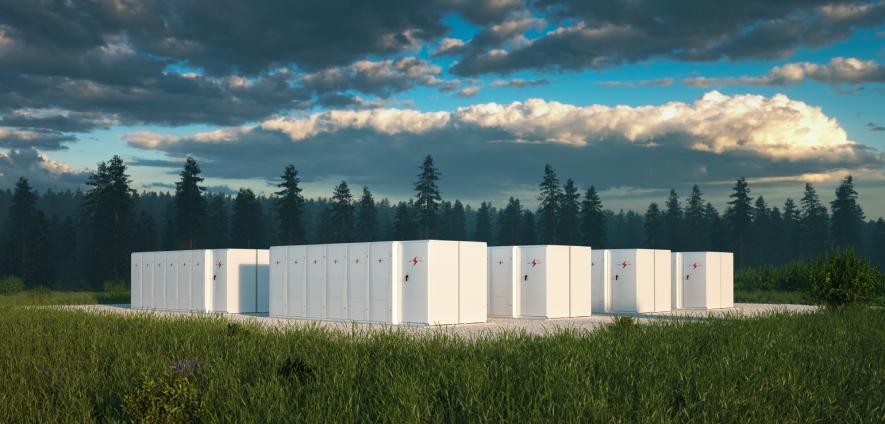
18 May 2023 - On the eve of the G7 summit in Japan, a report from new international business group the Corporate Leaders Network for climate action (CLN) highlights the vital role of storage in unlocking clean energy’s full potential and suggests cross-border cooperation as a vital catalyst to pool power and share storage options, and highlights the need for regulatory certainty.
Read the business briefing - The New Power Couple: Decarbonising economies via renewable electricity and storage innovations.
This first publication from an international cohort of business groups is published a month after environment ministers from G7 countries vowed to decarbonise national power sectors by the end of the decade. It gathers ideas and insights from across regions including South Africa, Japan, Chile and the EU, offering real-world solutions to climate problems with case studies from power sector businesses including energy companies EDF, Iberdrola and iGrid Solutions.
The briefing considers technologies including hydropower, liquid air storage, utility-scale batteries and thermal energy storage, mapping out the challenges facing the electricity storage sector despite accelerating investment and innovation, and recommends routes to meaningful progress for businesses and policymakers.
Beverley Cornaby, Director, Policy and Systems Change Collaborations, University of Cambridge Institute for Sustainability Leadership, conveners of the CLN, said: “The outcomes from the G7 environment ministers' meeting demonstrate ambition and offer a substantive scaffold for net zero action. The agreed targets aim to speed up renewable energy development and the phasing out of fossil fuels to achieve net zero in energy systems by 2050 at the latest.
“Electricity storage is a crucial piece of the energy system decarbonisation puzzle. The first companies and investors to roll out reliable, scalable and affordable electricity storage solutions will gain a large portion of the market share and benefit from the first mover advantage. And the first governments can accelerate the transition of the energy sector to provide the consistent, zero carbon supply of energy needed to meet their emissions reduction targets."
Energy group Iberdrola has built one of the biggest energy storage infrastructures in Europe at the Tâmega gigabattery in Portugal. Alto Tâmega and Daivões are ‘run of the river’ hydropower plants that generate electricity. At the same time, Gouvães is a large pumped storage plant that uses the Daivões reservoir as a lower reservoir. The complex will be capable of producing 1,766 GWh per year – enough to meet the energy needs of 440,000 homes – and will have a storage capacity of 40 million kilowatt-hours (kWh), equivalent to the energy consumed by 11 million people during 24 hours in their homes.
Rafael Chacón, Tamega Project Manager, Iberdrola said: “The Tâmega giga battery will provide 880 MW of pumping capacity to the Portuguese electricity system, an increase of more than 30% compared to the capacity available to the country today. These kinds of projects are crucial to provide the flexibility needed to move towards a renewables-based electricity system and a net-zero economy.”
The New Power Couple: Decarbonising economies via renewable electricity and storage innovations identifies five key recommendations for businesses and policymakers:
- Electricity storage solutions (ESSs) should be tailored to the country context. Decision-makers can look at several indicators to identify whether and which type of energy storage is appropriate, such as geographical constraints, business environment and availability of finance, policy and regulatory framework as well as more technical considerations like capacity of power plants and grid layout.
- Electricity storage requires regulatory certainty. Clear regulations, long-term grid planning, a level playing field with other resources, and a long-term direction of travel are all essential for establishing a conducive regulatory landscape.
- Storage sector requires an enabling financial environment for investment. Cost, as well as perceived cost, can present significant barriers to investment in new technologies. Grants, subsidies, tax incentives and low-interest loans may help to reduce the risks associated with investing in new technology and encourage businesses to take a long-term view.
- Supply-side policies should be supplemented with demand-side management. Government interventions, availability of behind-the-meter solutions as more access and awareness in the market can significantly enhance demand-side management. If household and commercial end-users can actively participate in managing and balancing the grid then this will ease the burden on infrastructure and on grid operators, enabling the flexibility which is essential for achieving high levels of renewable electricity (RE) integration.
- Decision-makers must leverage cross-border synergies through international cooperation. This can create regional ‘power pools’, allowing access to a greater variety of renewable resources, potentially reducing the need for ESSs and curtailment, while also enabling the deployment of a broader range of ESS options to meet extant storage needs.





